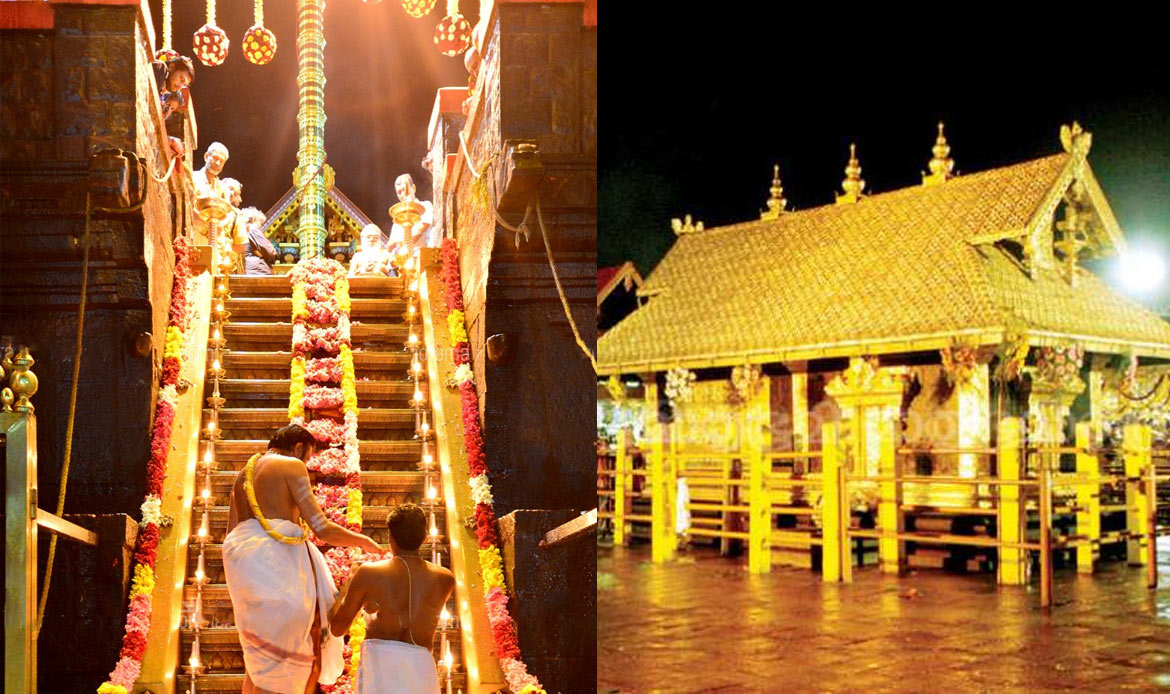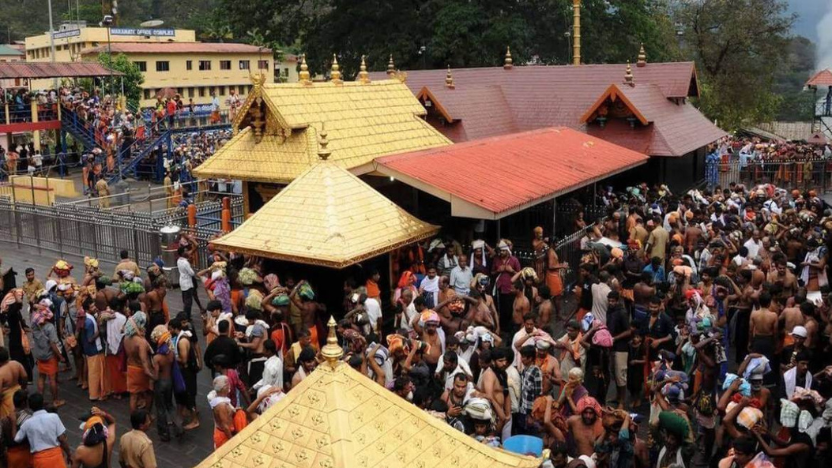Symbolically called as ‘Ponnu Pathinettampadi’, the 18 steps of Sabarimala Ayyappa temple lead to the sanctum sanctorum of the majestic temple which is believed to be an inalienable part of the darshan.
There are several myths related to the significance of 18 steps in the pilgrimage to Sabarimala and you would be surprised the moment you know the interesting facts of the holy steps. Without further delay, let us briefly explain some of the interesting facts about the 18 steps (Pathinettampadi ) of Sabarimala Temple that you probably didn’t know.

What are Pathinettampadi (18 steps) all about?
As per the mythology and elderly people, Lord Ayyappa devotees who visit the Sabarimala shrine have to climb up 18 steps to the sanctum sanctorum, all the while chanting the Pathinettampadi (song of the 18 steps).
The steps were originally covered with granite, but now they are covered with `Panchaloham’ (A Special Composition of gold, silver, copper, iron and tin) to prevent it from deterioration.
The climb has rules: Every devotee must begin it with their right foot. Only those who have undertaken the 41-day vratham - which involves abstinence from all worldly pleasures are allowed to ascend the 18 holy steps.
On their way to the temple, Ayyappa devotees must carry the ‘irumudi’, a small black cloth bundle that consists of puja items or personal possessions like a change of clothes and eat something light such as dry fruits.
The symbolism of Pathinettampadi (18 steps)
The first FIVE steps symbolise the five human senses (Panchendriyas)- Visual (Eye), Auditory (Ears), Olfactory (Nose), Gustatory (Tongue), and Tactile (Skin).
The following EIGHT steps symbolise the eight Ashtaragas- Kama (Love), Krodha (Anger), Lobha (Avarice), Moha (Lust), Madha (Pride), Maltsarya (Unhealthy Competition), Asooya (Jealous), Dhumb (Boastfulness).
The next THREE steps stand for three Gunas or Thrigunas (Nature-born qualities)- Satva (Perspicuity, Discernment), Rajas (Activity, Enjoyment), Thamas (Inactivity, Stupor).
The last TWO steps represent- Vidya (Knowledge), Avidya (Ignorance).

On the other hand, some believe that Ayyappa has mastered 18 weapons, and each step equated to a weapon. It is believed that Ayyappa finally surrendered at the ‘Pathinettam padi’ or the eighteenth step.
Perhaps, some also believe that the steps represent the 18 hills around Sabarimala, which is known as the highest temple stand on the hillside. Though there are several reasons for the significance of ‘Pathinettam padi’, the main highlight is the number ‘18’.
Image Credit: AstroVedic, Pinterest , Sabarimala.com
Source: PiPA
_3.png?ext=.png)